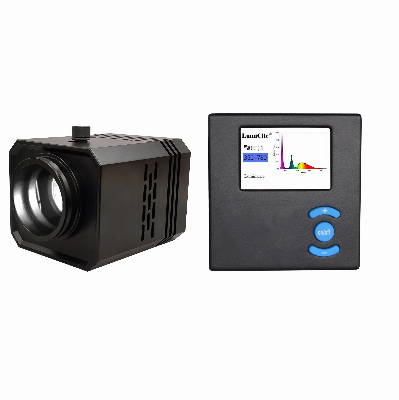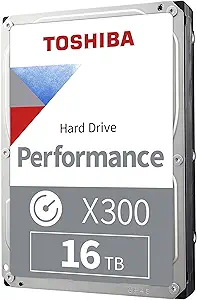Product Description Key FeaturesExceeds the brightness
of 100W Mercury LampCool lightInstant ON/OFF. No warm-up or
cool-down requiredAdjust light outputEasy installation Product
Parameters Wavelength Range: 350-780nm External Power
Supply: Universal input 110-240V, 50/60HzRelated Fluorescence:
DAPI, GFP/FITC, Texas Red, Cy3Sample LED FWHM: 454/24.8nm
523/36nm 368/16nm Power Consumption: 40WDimensions
HEAD: 142×95×85mm (L×W×H)Dimensions TOUCH PAD: 130×126×20mm
(L×W×H)LED ON/OFF Response Time: 1msI/O Connector: PS/2Control
method: RS-232LED Life Time: 30000
hours
BANDSBANDSCHANNELPOWER(mW)DAPIV330-38035FITCHB450-49065TRITCG510-55050 Installation
Instructions All mercury arc lamps used a common heat
absorbing filter from Schott…the KG1. Further, all Ploem
illuminators (still today) used a RED absorbing filter, again
from Schott, the BG-38 blue glass. These two filters are
normally removed from the light path when one is working in
the near UV range using filter block 400nm.I have measured the
temperature of the illumination beam of the HBO 100W bulb
using an analog "meat thermometer" with probe tip. I have measured
the temperature of the collimated beam immediately after the
KG1 heat filter and recorded temperatures in the range from
85-95F depending on placement position. I then measured the
temperature down on the stage of the microscope with both the
BG-38 and filter cube in position (no objective lens).Filters cubes
used were the H (Blue light 510 block) and N(Green light
580 block). I found that the temperature range on the surface
of the microscope stage where the slide would be placed was
only a few degrees above room temperature. The KG1 and BG38
filters along with the combined exciter filter and emission
(barrier) filters and filter blocks (dichroic beam splitters)
were doing their job nicely. One problem encountered by
those doing epifluorescence microscopy using the arc lamp is
"quenching" of the fluorescent dye (fluorochrome). "Fading" of
the emitted light during exposure became somewhat of a
problem. Certain "antifade" tricks applied during sample prep
became a useful solution to some extent. Certainly the
advantage of using LED as an alternative to mercury arc lamps
is now realized. One turns on the LED (optimized for the four
dichroic blocks 400, 455, 510 and 580nm) and then simply
reduces intensity as you would with a halogen bulb. LED
illumination is not as "cool" as you would think. The same
heat and red absorbing filters are called for. "Fading"
(and temperature) is then reduced by adjusting the intensity
of the LED. No warm up or shutdown problems with LED. No
shutters are needed in the light path. The LED can easily be
controlled via connection to your computer. LED
illumination lasts 20-50,000 hours. Mercury arc bulbs last
about 200 hours and cost about $200.00 each. Do the math and
accept the performance enhancements found with modern LED
illumination. We no longer use silver halide for documentation
in microscopy….we are in a digital world now and the
LED promises to be the most efficient light source for optical
light microscopyfluorescence studies. Contact FSM with any
questions. We have the best alternative LED lighting now for
taking the place of mercury arc illumination. Company
Profile With 6 years working, we succesfully get a good LED
illuminator for microscope. It provides stable performance and over
20000 hours lifetime. Max 9 channels in a
device. Detailed Photos
Related products about LED Lighting Source for Optical Microscope
-
 Waste Tyre Plastic Recycling Machinery Machine Tire Crusher Production Line Rubber Crumb Grinding Machine Equipment Tire Shredder
Waste Tyre Plastic Recycling Machinery Machine Tire Crusher Production Line Rubber Crumb Grinding Machine Equipment Tire Shredder
-
 Stretch Plastic Blowing Pet Bottle Making Blow Molding Machine Bottles Stretch Automatic Pet Bottle Blowing Machine
Stretch Plastic Blowing Pet Bottle Making Blow Molding Machine Bottles Stretch Automatic Pet Bottle Blowing Machine
-
 Waste Plastic Pet Bottle, Water Bottle Flake, PP/HDPE/LDPE PE Film Jumbo Woven Bags Plastic Crusher Machine, Plastic Crushing Washing Recycling Machine
Waste Plastic Pet Bottle, Water Bottle Flake, PP/HDPE/LDPE PE Film Jumbo Woven Bags Plastic Crusher Machine, Plastic Crushing Washing Recycling Machine
-
 Type 2 Wall-Mounted Electric Car Charging Station 7kw /11 Kwelectric Vehicle Charging Station Home Wallbox AC EV Charger Single Phase or 3three Phase
Type 2 Wall-Mounted Electric Car Charging Station 7kw /11 Kwelectric Vehicle Charging Station Home Wallbox AC EV Charger Single Phase or 3three Phase
-
 G-View G12W Wholesale Auto Car LED Headlight Bulb High Power H13 H11 9005 H7 H4 Car LED Headlights LED Car Lights
G-View G12W Wholesale Auto Car LED Headlight Bulb High Power H13 H11 9005 H7 H4 Car LED Headlights LED Car Lights
-
 New Design Porcelain Round Plates Dinner Set for Wedding and Banquet
New Design Porcelain Round Plates Dinner Set for Wedding and Banquet
-
 China 2023 New Design Super Soft 100% Polyester Microfiber Knitted Oversized Decoration Hoodie Blanket
China 2023 New Design Super Soft 100% Polyester Microfiber Knitted Oversized Decoration Hoodie Blanket
-
 Handmade Art Creative Materials Thickened White Paper Cup DIY Disposable Handmade Colored Paper Cup
Handmade Art Creative Materials Thickened White Paper Cup DIY Disposable Handmade Colored Paper Cup






